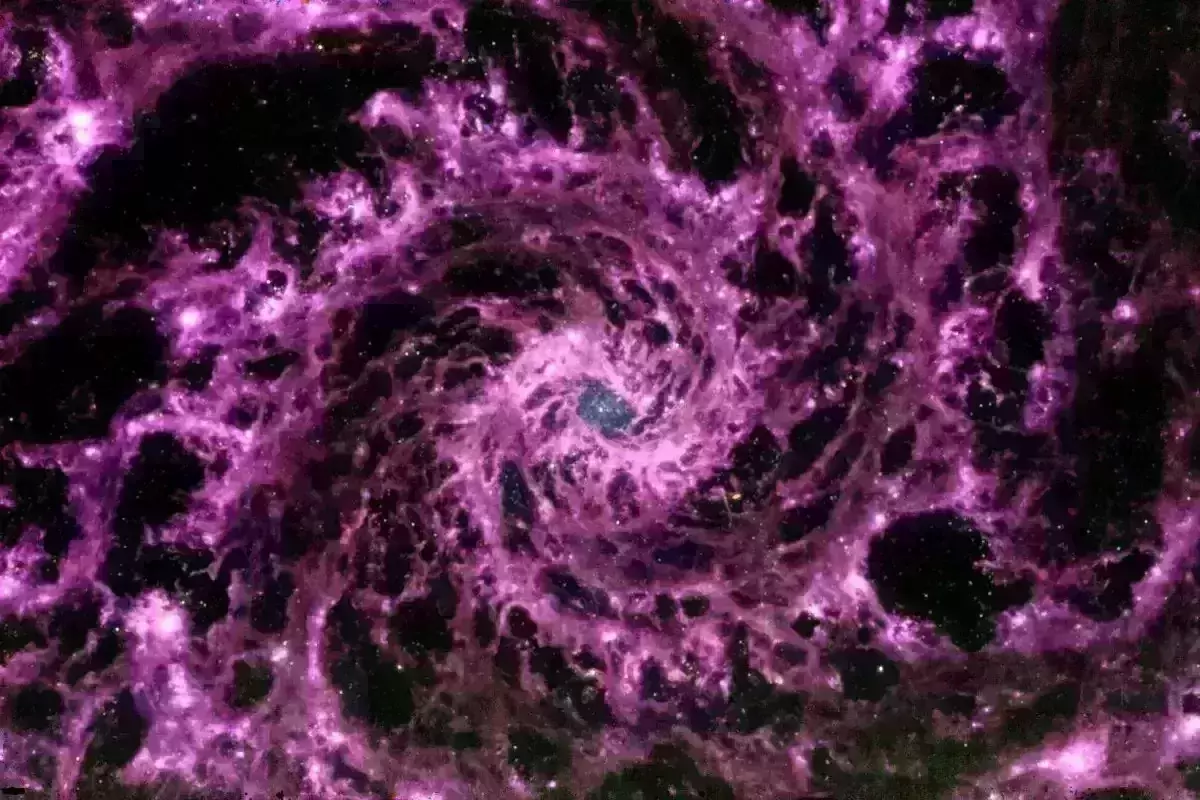
JWST delivers phantom galaxy photo that mirrors a purple vortex
text_fieldsEver since the James Webb Space Telescope (JWST) started delivering images, astronomy enthusiasts are always keeping an eye out for a new one. The latest to make some noise is a phantom galaxy. Experts say that it looks like a purple vortex.
The galaxy in question is named NGC 628 or Messier 74 and it is known for its perfect symmetrical spiral. The image collected by JSWT highlights dust lanes. Scientists believe there is an intermediate-mass black hole at its centre that makes it symmetrical, reported Space.com.
The same galaxy has been photographed before but space image processor Judy Schmidt told Space.com that data from JWSP is something new, different, and exciting.
The new image has gone viral for its beauty because it looks like a purple vortex and many are comparing it to a visual on Doctor Who. Processed by Gabriel Brammer, the whirlpool of purple looks like it is radiating counter-clockwise from its centre.
Answering the question of whether the galaxy is actually purple, he said: "For a tiny bit more context, the purple colour cast here is actually 'real' in the sense that emission from interstellar cigarette smoke (PAH molecules) makes the filters used for the blue and red channels brighter relative to the green."
Being 32 million light-years from Earth, the Messier 74 currently seems to possess two prominent and well-defined spiral arms.
The astronomer explained that the human eye is essentially blind to every photon JWST instruments detect. He, like many others, has processed the data made public by NASA. He added that the image he tweeted is a composite of three monochromatic images taken by the MIRI instrument at 7.7, 10 and 11 micrometre wavelengths.
He also noted that the filamentary structures seen in the image are emissions from interstellar dust and polycyclic aromatic hydrocarbon molecules.






















